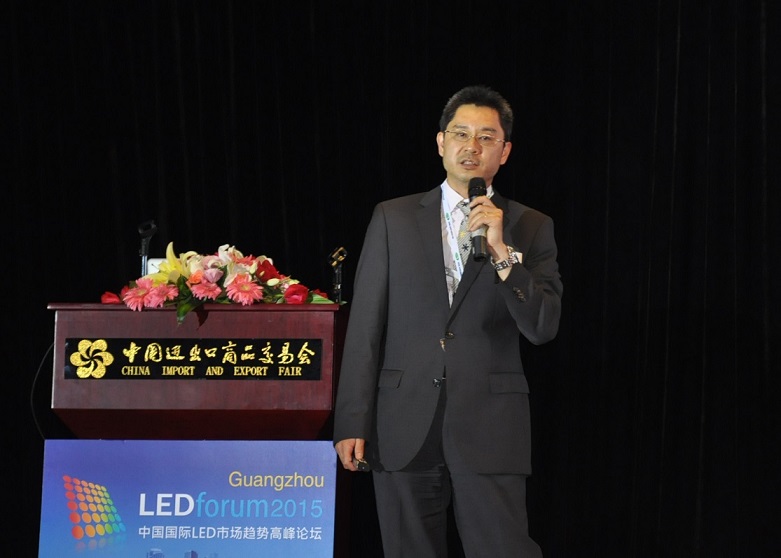CSP technology will lead the emergence of new LED package material demands, said Kaz Maruyama, Global Marketing Director, Lighting Solutions, Dow Corning at LEDforum 2015 Guangzhou, which took place earlier this month at China Import and Export Fair Pazhou Complex in Guangzhou, China.
Speaking about new LED package trends, Maruyama noted a growing trend of LED manufacturers investing in R&D of Chip Scale Package (CSP) LED to lower overall costs and refine LED features. The trend he says will spur market demand for innovative LED package material.
 |
|
Kaz Maruyama, Global Marketing Director, Lighting Solution, Dow Corning delivers a talk at LEDforum 2015 Guangzhou. LEDinside is one of the main organizers of the LED forum that took place earlier this month at Guangzhou, China. (LEDinside) |
To meet this new market demand, Dow Corning released a new phosphor film made from thermosetting silicon compound. When temperatures are below 60℃, the film is a viscoelastic solid, but when temperatures are between 100-140℃ the material undergoes viscous melt to cover the whole product surface. Once temperatures exceed 150℃ it will become thermoset phosphor film. This innovative material can simplify the production process and lower costs, while making LED package and design more flexible. At the same time, it can enhance phosphor powder distribution and provide better light quality.
Due to LED package’s distinctive features, the industry tends to have very high LED package material standards. The material must have high thermal resistance, since temperatures during LED eutectic process can exceed 150℃. Other requirements include high photostress, high light extraction, and good thermal capacity. Heat flux of LED package materials also need to reach 100W/cm2 and have high reliability. It is essential for LED package material to have high reliability since during the LED packaging process the phosphor might undergo chemical reactions or oxidation.
Since 2002, Dow Corning has been developing LED optical encapsulants with high reliability and high refractive indices. The company released its first generation phenyl-based silicones OE-66xx series in 2006. Compared to methyl-based silicones, phenyl-based silicones have higher refractive indices of above 1.5, have better air tightness and stress relief. In comparison methyl-based silicones usually have a refractive indice around 1.4. Phenyl-based LED package materials can boost LED light extraction by 7%, said Maruyama.
Following phenyl-based silicones launch on the market, LED manufacturers wanted package material with better mechanical reliability. Dow Corning responded by releasing a second generation OE-7620/30/40, which further advanced thermal conductivity and stress relief. At this year’s Guangzhou International Lighting Fair (GILE), Dow Corning displayed its third generation LED encapsulant OE-7651N/7662. Compared to the previous two generations the new product had made significant breakthroughs in phosphor compatibility, air tightness, and improved color quality and reliability.
(Author: Flora, Editor, LEDinside China Editor/Translator: Judy Lin, Chief Editor, LEDinside)











